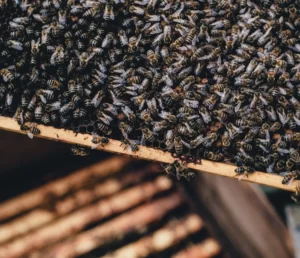Table of Contents
When it comes to finding the best Manuka honey, there are a few factors to consider. One important aspect is the MGO rating, which indicates the level of bioactive compounds present in the honey. Another measurement to consider is the UMF (Unique Manuka Factor) number, which takes into account the MGO count as well as other active compounds unique to Manuka honey. In this guide, we will explore the differences between MGO and UMF, discuss the best uses for different levels of Manuka honey, and provide a parity chart to help you convert between the two measurements.
MGO Rating: Indicating Quality
Raw Manuka Honey by Nature’s Blends boasts an MGO rating of 83+. This rating is a reflection of the methylglyoxal (MGO) content in the honey, a natural compound that gives Manuka honey its distinctive properties. The higher the MGO content, the better the quality of the honey. Nature’s Blends ensures the highest quality by subjecting every batch to rigorous testing, confirming that it is packed with natural goodness.
Understanding MGO & UMF
While both MGO and UMF serve as indicators of quality, they measure different aspects of Manuka honey. MGO specifically measures the MGO count, while UMF takes into account the MGO content as well as other active compounds found exclusively in Manuka honey. Both measurements provide valuable information, but they cannot be directly compared.
Choosing the Best Level of Manuka Honey
The best level of Manuka honey for you will depend on your intended use. Here are some guidelines to help you pick the right type:
1. Table Grade (MGO 83 – MGO 263)
Table grade Manuka honey is ideal for daily consumption. Whether you want to include it in your health chart, use it in beverages or salads, or simply take it raw, this level of honey is a versatile choice. With an MGO rating of 83+, Nature’s Blends Raw Manuka Honey is perfect for everyday use.
2. Moderate Grade (MGO 263 – MGO 514)
Considered the ‘therapeutic grade,’ moderate grade Manuka honey contains a higher concentration of bioactive compounds. This level of honey is often used for specific health purposes or as a natural remedy. It offers a more potent and targeted effect.
3. Higher Grade Manuka Honey (MGO 514 – MGO 1200)
For those seeking the highest levels of bioactivity, higher grade Manuka honey is the way to go. With its elevated MGO and UMF values, this honey provides a more intense and concentrated experience. It is often used for specialized health applications and is known for its exceptional quality and purity.
MGO and UMF Parity Chart
Although MGO and UMF measure different aspects of Manuka honey, there is a relationship between their values. The following chart provides a rough parity guide to help you convert between the two measurements and determine the quality of your Manuka honey:
- UMF 5 = MGO 83
- UMF 10 = MGO 263
- UMF 15 = MGO 514
- UMF 20 = MGO 829
- UMF 25 = MGO 1200
By referencing this chart, you can better understand the quality and potency of the Manuka honey you are consuming.
In conclusion, finding the best Manuka honey involves considering both the MGO rating and the UMF number. While MGO reflects the concentration of methylglyoxal, UMF takes into account additional active compounds found only in Manuka honey. By understanding these measurements and considering your intended use, you can select the perfect level of Manuka honey to suit your needs. Whether you choose table grade, moderate grade, or higher grade Manuka honey, Nature’s Blends Raw Manuka Honey is a reliable choice, providing exceptional quality and natural goodness with its MGO rating of 83+.



